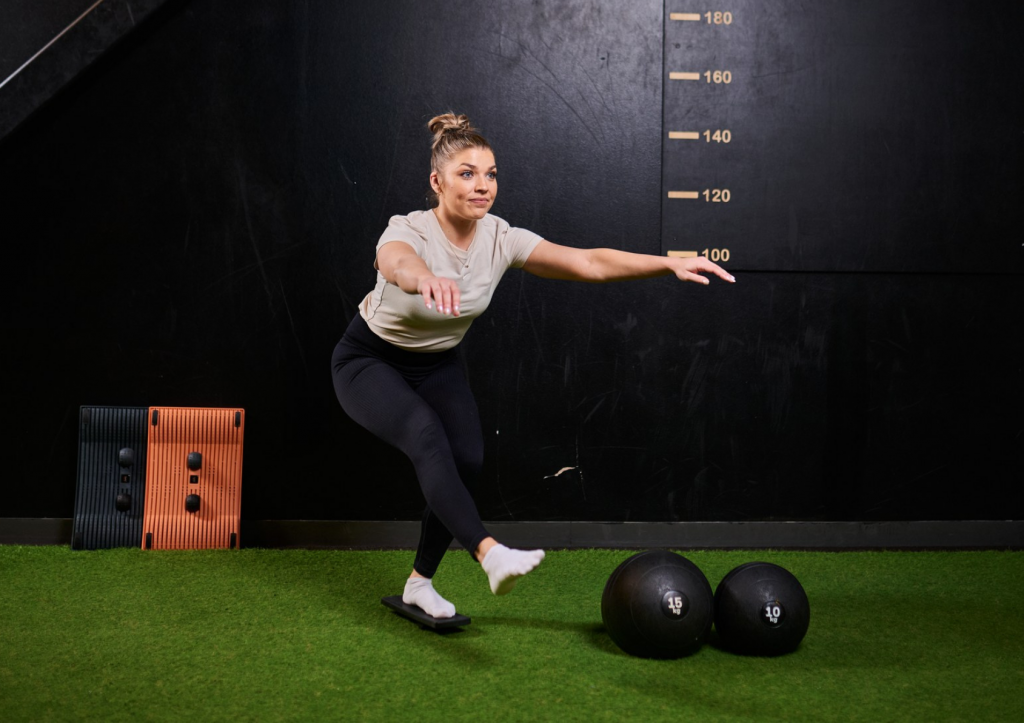For athletes at every level, preventing injuries is just as important as performance training. Balance training has emerged as a vital component of injury prevention programs across diverse sports, from football to gymnastics. When our body’s equilibrium systems function optimally, we create a foundation for safer movement patterns and reduced injury risk. Balance training doesn’t just prevent falls—it fundamentally changes how our bodies respond to physical challenges and unpredictable situations that occur during competition and training.
Why balance training is crucial for injury prevention in sports
Balance training directly impacts the neurological pathways that control coordination and stability. The connection between balance ability and injury rates is well-established in sports medicine research. Athletes with poor balance demonstrate significantly higher injury rates, particularly affecting the ankles, knees, and core musculature.
The numbers tell a compelling story: consistent balance training can reduce ankle sprains by up to 40% in high-risk sports like basketball and volleyball. For football and rugby players, knee injuries decrease by approximately 30% when balance exercises are incorporated into regular training regimens. These improvements stem from enhanced neuromuscular control—your body learns to activate the right muscles at precisely the right moment to stabilize joints during dynamic movements.
Balance training creates more resilient athletes by improving muscle reaction times, enhancing joint stability, and developing better body awareness during complex movements. This is particularly important for protecting vulnerable areas like the anterior cruciate ligament (ACL), which benefits from the improved motor control that balance training provides.
How does proprioception impact athletic performance?
Proprioception—your body’s position sense—functions as an internal navigation system that constantly monitors where your body parts are in space. This sensory awareness forms the foundation of all coordinated movement and plays a crucial role in preventing athletic injuries.
When proprioception is compromised, athletes experience delayed reaction times and poor movement coordination. Balance training enhances proprioceptive feedback by challenging the sensory receptors in your joints, muscles, and tendons. Each time you train on an unstable surface, these receptors become more sensitive and responsive, improving your body’s ability to detect subtle shifts in position.
Improved proprioception manifests in several performance benefits:
- Faster reaction times during unexpected movement challenges
- More precise joint positioning during complex movements
- Enhanced spatial awareness during competitive situations
- Improved movement efficiency, reducing fatigue and energy wastage
These improvements are particularly valuable in sports requiring rapid directional changes, such as tennis, basketball, and football, where proprioceptive awareness can mean the difference between maintaining control and sustaining an injury.
Key balance exercises for injury prevention across sports
Effective balance training programs include exercises that progressively challenge stability while mimicking sport-specific movements. Using tools like the Gymba Balance Board MINI enhances these exercises by adding an element of instability that activates additional stabilizing muscles.
For single-leg stability, which is crucial in most sports, try these exercises:
- Single-leg stance: Stand on the Balance Board MINI with one foot, maintaining position for 30-60 seconds while keeping your core engaged
- Dynamic reaches: While balancing on one leg on the board, reach your free leg in different directions to challenge stability
- Single-leg squats: Perform shallow squats while balancing on the board to strengthen ankle stabilizers and quadriceps simultaneously
Core strengthening exercises using balance equipment are particularly effective:
- Plank variations with feet or hands on the Balance Board MINI
- Rotational exercises while maintaining balance to engage obliques
- Push-up variations with hands placed on the board for increased difficulty
The versatility of the Gymba Balance Board MINI makes it suitable for athletes at all levels—beginners can start with basic stability exercises while professional athletes can incorporate it into complex movement patterns for enhanced training benefits.
Beyond prevention: balance training for rehabilitation
Balance training proves equally valuable during rehabilitation from injuries. Following an ankle sprain or knee injury, proprioceptive function is often compromised, requiring specific retraining to restore normal movement patterns.
A graduated rehabilitation approach using balance training typically follows this progression:
- Static balance exercises on stable surfaces
- Single-leg stability on increasingly challenging surfaces
- Dynamic balance with controlled movement patterns
- Sport-specific balance challenges that mimic competitive demands
The Gymba Balance Board MINI offers advantages during rehabilitation by providing controlled instability that can be adjusted based on recovery stage. For ankle rehabilitation, gentle rocking movements on the board help restore range of motion while simultaneously retraining proprioceptive responses. During knee rehabilitation, the board facilitates controlled stability challenges that strengthen supporting musculature without excessive joint stress.
Physical therapists particularly value tools that enable gradual progression of difficulty, allowing athletes to rebuild confidence and physical capability simultaneously as they recover from injuries.
Integrating foot health into athletic performance training
The foundation of balance begins with foot health—an often overlooked aspect of athletic performance. The feet contain numerous proprioceptive receptors that provide critical information about surface contact and body position. When foot function is compromised, the entire kinetic chain is affected.
Foot-specific training should address several components:
- Intrinsic foot muscle strengthening
- Mobility of the foot and ankle complex
- Sensory stimulation of plantar (bottom of foot) receptors
- Myofascial release to maintain tissue quality
The Gymba Balance Board MINI offers a unique advantage through its integrated acupressure and myofascial release features. When turned upside down, the fixed textured massage balls provide targeted pressure to release tension in the plantar fascia—the thick band of tissue that runs along the bottom of the foot. Regular use helps maintain foot mobility and reduces tension that can contribute to issues like plantar fasciitis or altered movement patterns.
Incorporating foot health into your balance training routine creates a more comprehensive approach to injury prevention. By addressing the foundation of the movement system, athletes can build more resilient movement patterns from the ground up.
Balance training represents one of the most effective, accessible approaches to injury prevention available to athletes. By incorporating specialized tools like the Gymba Balance Board MINI into regular training routines, athletes can develop the proprioceptive awareness and neuromuscular control needed to reduce injury risk while enhancing performance capabilities. Whether you’re recovering from an injury or working to prevent one, balance training offers benefits that extend far beyond simply not falling over—it fundamentally improves how your body moves and responds to the demands of athletic competition.

